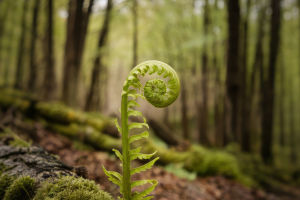If you’ve ever stared at your lush green orchid leaves and wondered why there are no flowers, you’re not alone. Orchids are stunning but sometimes a bit moody when it comes to blooming.
The good news? We can change that. With a few practical tips and a little patience, we can turn our orchids from leafy plants into blooming beauties. Let's go through the steps together to bring out the best in our orchids.
Choose the Right Light Spot
Light is one of the most important keys to making orchids bloom. Orchids love bright, indirect sunlight. If we put them near a south or east-facing window with filtered light, they’ll be happy. Phalaenopsis orchids—the most common kind—don’t like direct sun, which can burn their leaves. But too little light will stop them from blooming. If the leaves are dark green, it means not enough light. Healthy orchids should have light green leaves.
If we don’t have a good natural light source, full-spectrum grow lights can help a lot. They mimic sunlight and are a great alternative, especially in winter.
Water Just the Right Way
Overwatering is one of the biggest mistakes we can make with orchids. They like to dry out a little between waterings. A good rule is once a week, or twice during their growing period. Always check the potting bark—if it still feels damp, wait a bit. Orchids need pots with drainage holes so their roots never sit in water.
Early morning is the best time to water. This gives any extra moisture a chance to dry before nightfall. Most orchids only need about 2 ounces (about 60 ml) of water per watering.
Control Humidity and Airflow
Orchids come from humid tropical climates, so they prefer air that’s more humid than most of our homes. Phalaenopsis orchids like humidity levels between 40% and 70%. In winter, it can drop too low indoors, but we can fix that easily. We can group orchids together, use a humidity tray filled with pebbles and water, or run a small humidifier nearby.
At the same time, orchids need fresh air. If humidity is too high without airflow, the plant can rot. We can open a window slightly or use a small fan on low speed to keep the air moving.
Trigger Blooming with Temperature Changes
Here’s a fun trick: orchids bloom better when they experience a dip in night temperature. If we lower the room temperature by about 10°F (around 5°C) at night for one to two weeks, especially during early fall, it often triggers blooming.
For Phalaenopsis, try to keep daytime temperatures around 80°F (27°C) and nighttime around 60°F (16°C). This temperature difference is what orchids would naturally feel in the wild—and it tells them it’s time to bloom.
Feed Them at the Right Time
Just like us, orchids need food to stay healthy. We should use a fertilizer made for orchids and apply it once a month during the growing season (usually spring to fall). During their rest period (December to February), we should skip the feeding to give the plant a break.
Always follow the directions on the label. Too much fertilizer can damage the roots and actually prevent flowers from forming. Less is more!
Use the Right Potting Mix
Orchids don’t grow in regular soil. They need a special mix that lets air reach their roots. The best choice is pine bark or a blend of bark, moss, and perlite. If our orchid looks unhappy, it might be time to repot it. Orchids should be repotted every 1–2 years to keep their roots healthy and breathing well.
Let’s Bloom Together
Lykkers, caring for orchids isn’t just about beauty—it’s about creating the right environment for them to thrive. If we give them the right light, the right water, the right mix of food and air, they will reward us with blooms that last for weeks, sometimes even months.
Let’s keep observing our orchids, trying these tips, and learning as we go. Have you tried any of these tricks before? Or do you have a secret tip of your own? We’d love to hear your orchid stories—share them with us and let’s bloom together!
How to make your orchids bloom constantly.
Video by Creative Art 2 Heart


